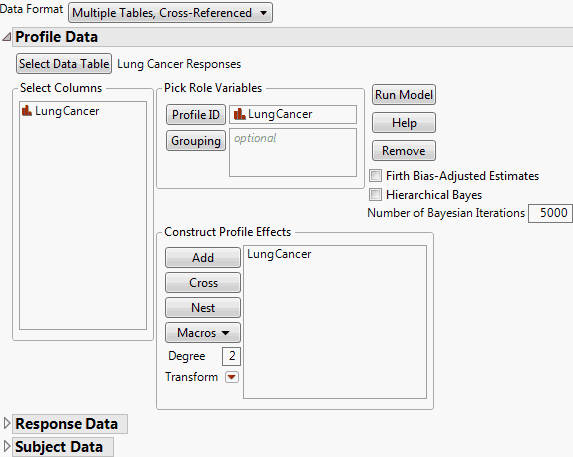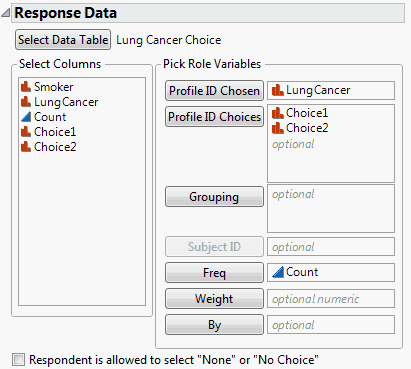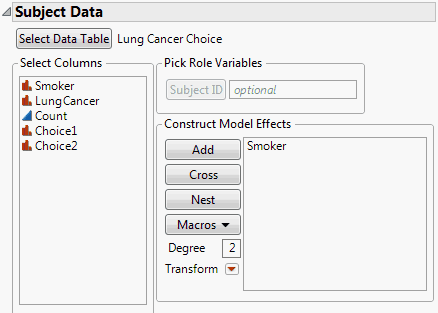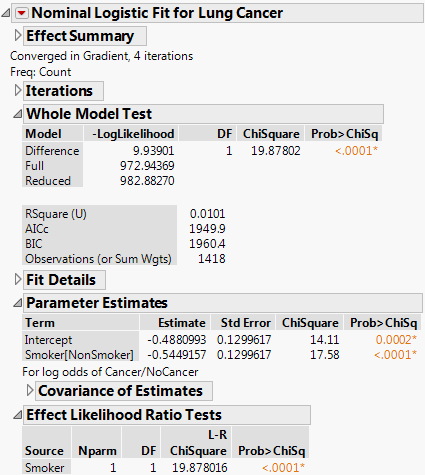|
1.
|
Notice Lung Cancer Responses.jmp has only one column (Lung Cancer) with two rows (Cancer and NoCancer).
|
2.
|
|
3.
|
Select Multiple Tables, Cross-Referenced from the list next to Data Format.
|
|
4.
|
|
5.
|
|
6.
|
|
8.
|
Open the Response Data outline.
|
|
9.
|
|
–
|
|
–
|
|
–
|
|
11.
|
Open the Subject Data outline.
|
|
12.
|
|
13.
|
|
14.
|
Click Run Model.
|
|
1.
|
|
2.
|
Because the data table contains a model script, the Model Specification window is automatically completed. The Nominal Logistic personality is selected.
|
3.
|
Click Run.
|
Notice that the likelihood ratio chi-square test for Smoker*Lung Cancer in the Choice model matches the likelihood ratio chi-square test for Smoker in the Logistic model. The reports shown in Figure 4.40 and Figure 4.41 support the conclusion that smoking has a strong effect on developing lung cancer. See Logistic Regression Models in the Fitting Linear Models book for more details.





